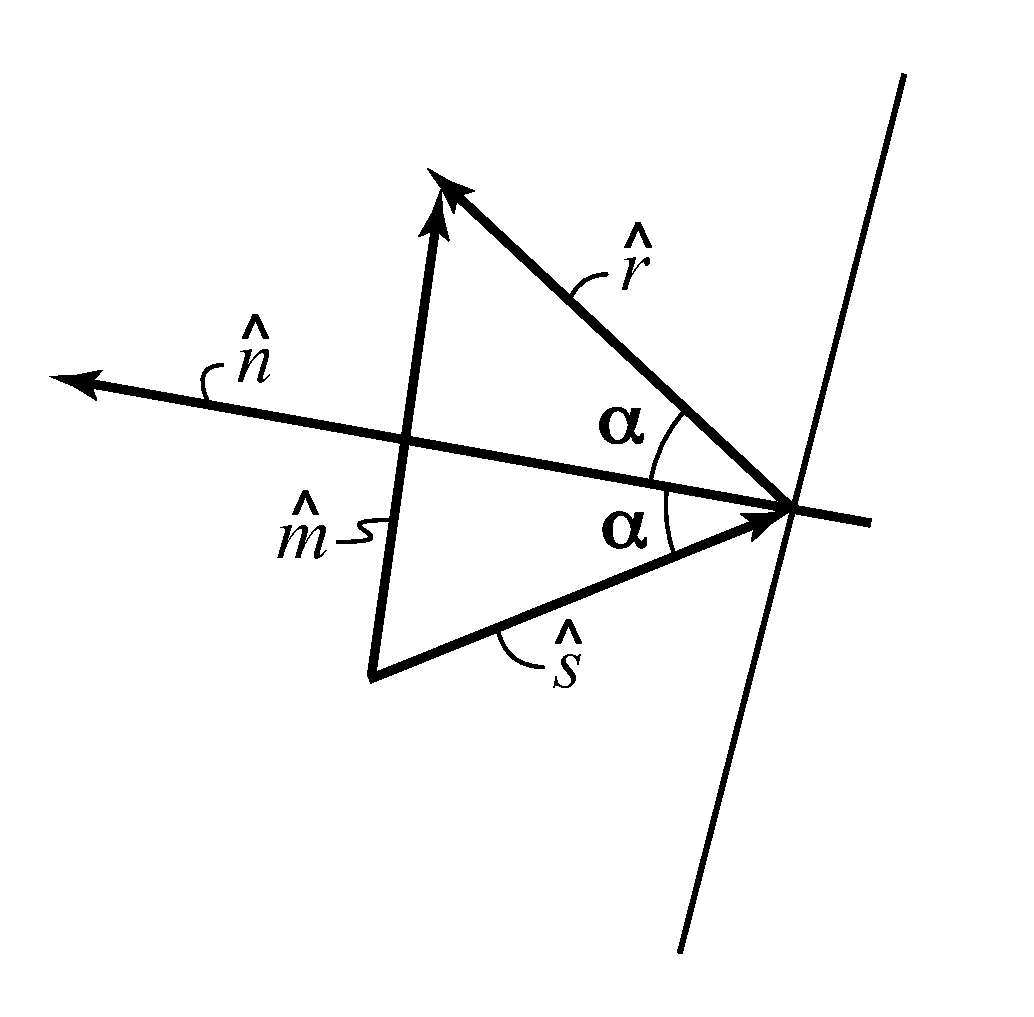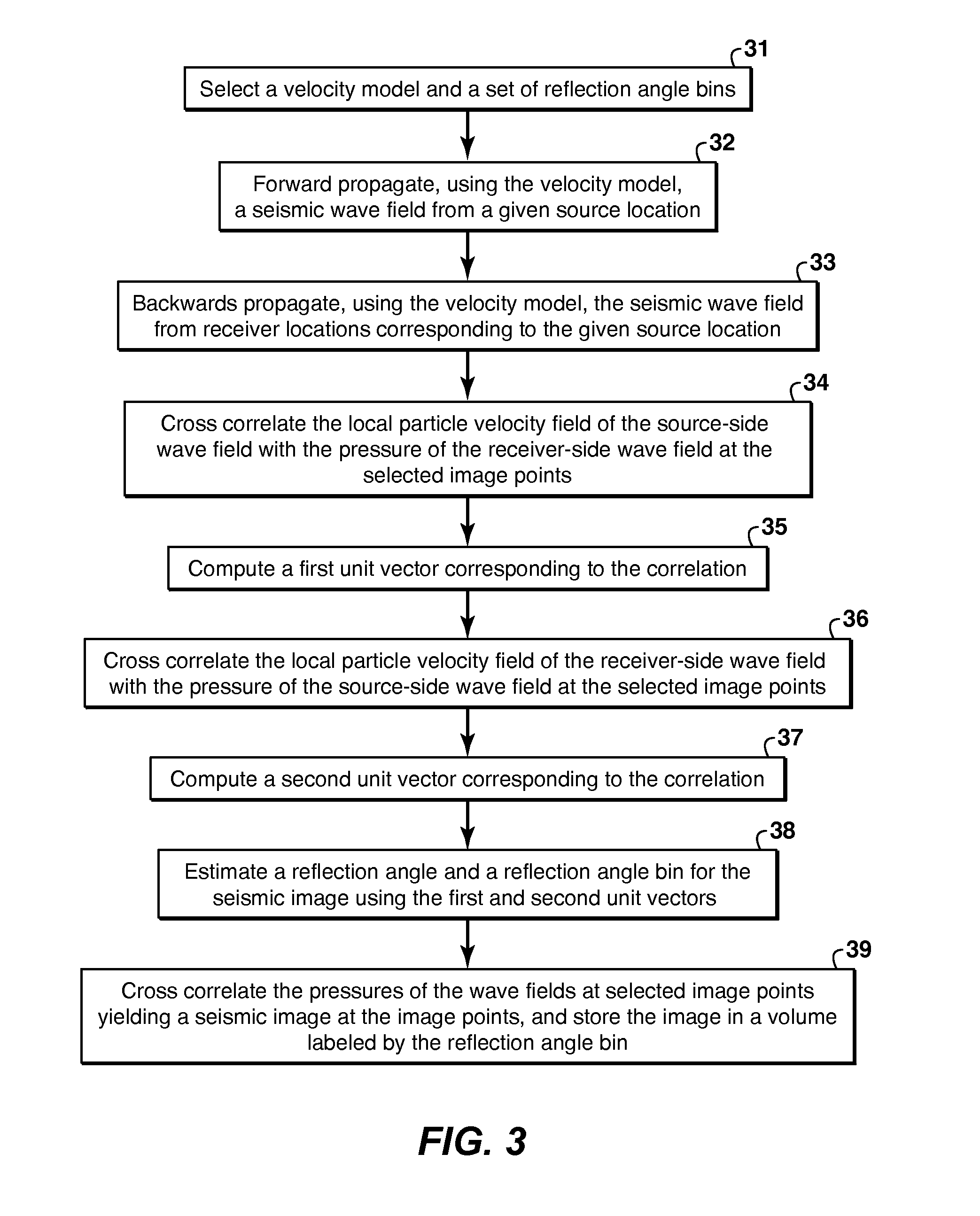Efficient computation of wave equation migration angle gathers
a technology of migration angle and computation method, applied in the field of geophysical prospecting, can solve the problems of less useful than angle gathers, more expensive than wem, and difficult to efficiently produce common reflection angle gathers with either method
- Summary
- Abstract
- Description
- Claims
- Application Information
AI Technical Summary
Benefits of technology
Problems solved by technology
Method used
Image
Examples
Embodiment Construction
[0033]A teaching of the present invention is to continue the wave fields as described above, using either WEM or RTM, but to make the computationally inexpensive step of using multiple imaging conditions. For example for P-P imaging in an isotropic medium, the normal imaging condition in WEM and RTM is:
DM({right arrow over (x)})=∫dωps({right arrow over (x)},ω)pr*({right arrow over (x)},ω) (3)
The convolution can of course be performed in either the frequency or time domain. Now, for example, in RTM the downward continuation can be computed in time using the first order equations, where p is pressure, v is local particle velocity, ρ is density, and λ is the bulk modulus:
[0034]ρ∂v->∂t=-∇p(4)∂p∂t=-λdiv(v->).(5)
[0035]This means that at each image point the pressure and local particle velocity are both available. Therefore one can also compute:
{right arrow over (s)}M({right arrow over (x)})=∫dω{right arrow over (v)}s({right arrow over (x)},ω)pr*({right arrow over (x)},ω) (6)
This vect...
PUM
 Login to View More
Login to View More Abstract
Description
Claims
Application Information
 Login to View More
Login to View More - R&D
- Intellectual Property
- Life Sciences
- Materials
- Tech Scout
- Unparalleled Data Quality
- Higher Quality Content
- 60% Fewer Hallucinations
Browse by: Latest US Patents, China's latest patents, Technical Efficacy Thesaurus, Application Domain, Technology Topic, Popular Technical Reports.
© 2025 PatSnap. All rights reserved.Legal|Privacy policy|Modern Slavery Act Transparency Statement|Sitemap|About US| Contact US: help@patsnap.com



